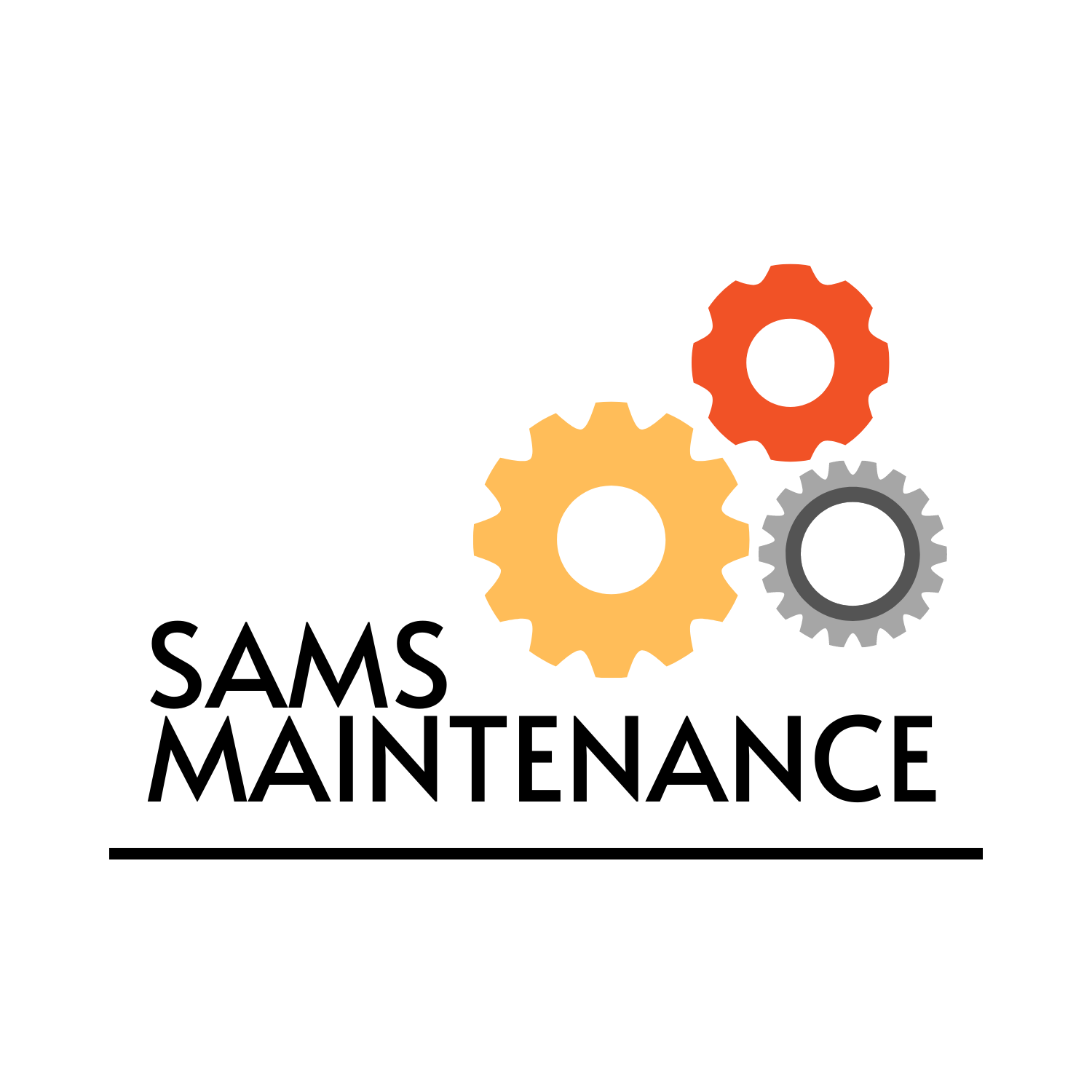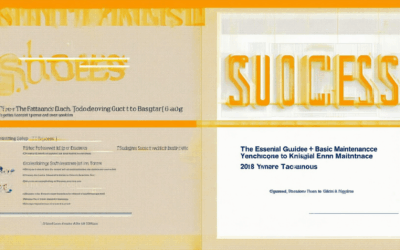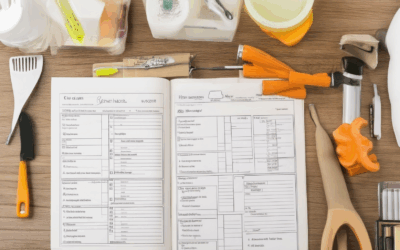Maintaining a home is essential for preserving its value and ensuring longevity. In today’s fast-paced world, homeowners often overlook the significance of routine care, which can lead to costly repairs down the line. This comprehensive guide dives into the basics of home maintenance, covering everything from regular tasks to long-term strategies. Whether you’re new to homeownership or looking to refine your existing routine, this article offers valuable insights and actionable tips. Discover how to create a maintenance schedule that fits your lifestyle, understand the importance of consistent care, and explore cost-effective solutions to keep your home in prime condition. By following the advice in this guide, you’ll not only extend your property’s lifespan but also enjoy a safer and more comfortable living environment.
Key Takeaways
- Schedule Annual Inspections: Regularly inspect your HVAC system, roof, smoke detectors, and major appliances to ensure safety and efficiency.
- Maintain Monthly Tasks: Change air filters, check pipes for leaks, prune trees, inspect attics and basements, and test fire extinguishers to keep your home in top shape.
- Establish Weekly Routines: Vacuum floors, check for pests, maintain landscaping, water plants, and inspect for leaks to uphold cleanliness and functionality.
- Prepare for Emergencies: Build an emergency kit, locate utility controls, secure your home, and get ready for natural disasters to stay safe.
- Understand Home Care Terminology: Learn terms like homemaking, house management, and home maintenance to effectively care for your property.

Regular House Maintenance Checklist
Keeping your house in great shape requires consistent effort. Here’s a detailed guide to the essential tasks you should perform regularly to maintain its health and longevity:
Exterior Maintenance
- Roof Inspection:** Inspect for missing or damaged shingles, curled edges, and worn-out flashing. Replace as needed.
- Gutter Cleaning:** Remove debris like leaves and twigs to prevent clogs and water overflow.
- Siding Check:** Look for peeling paint, warping wood, or damage from pests like woodpeckers.
- Window Inspection:** Examine frames for cracks, gaps, or rot. Replace weatherstripping as necessary.
- Deck Maintenance:** Sand and refinish decks, repair loose boards, and check for structural issues.
Plumbing System
- Main Water Valve:** Turn off and test to ensure no leaks. Check for visible pipe leaks.
- Water Heater Inspection:** Look for rust, corrosion, or water buildup. Schedule professional servicing annually.
- Under Sink Check:** Inspect for water damage or mold under sinks and around pipes.
Heating and Cooling Systems
- HVAC Tune-Up:** Schedule annual service to ensure efficiency and prevent breakdowns.
- Furnace/Boiler Check:** Inspect venting pipes for blockages and test fuel lines for leaks.
- Air Filter Replacement:** Clean or replace filters monthly to maintain air quality and system efficiency.
Electrical System
- Circuit Breaker Check:** Test GFCI (Ground Fault Circuit Interrupter) outlets for functionality.
- Outlet Testing:** Ensure all outlets are functioning properly and not overloaded.
- Light Switches:** Test switches to confirm they are working correctly and safely.
Fire Safety
- Smoke Detector Testing:** Replace batteries and test functionality monthly.
- Carbon Monoxide Detector Check:** Ensure detector status is active and alarms function properly.
Landscape and Yard
- Tree and Shrub Trimming:** Keep trees and shrubs pruned to prevent damage to your house or power lines.
- Dead Tree Removal:** Remove trees that may fall and pose a risk to your property or family.
- Driveway and Walkway Maintenance:** Fill cracks and clean surfaces to prevent tripping hazards and wear.
Interior Maintenance
- Floor and Carpet Check:** Look for loose tiles, uneven surfaces, or carpet wear.
- Bathroom and Kitchen Plumbing:** Inspect under sinks and behind appliances for leaks and water damage.
- Mold Growth:** Check for black mold in damp areas like basements or attics.
Appliance Care
- Dishwasher and Refrigerator Hoses:** Replace hoses if they show signs of wear or cracking.
- Appliance Functionality:** Test operation of major appliances like ovens, microwaves, and laundry machines.
Structural Checks
- Foundation Inspection:** Look for cracks, unevenness, or movement indicating potential structural issues.
- Door and Window Frames:** Check for alignment and stability to prevent drafts or security risks.
Frequency Tip: Most maintenance tasks should be performed annually, but some may require more frequent attention depending on usage and conditions. Regularly inspecting for wear and tear and addressing issues promptly will extend your home’s lifespan and save money on repairs.
What is the 1% Rule for Home Maintenance?
The 1% rule for home maintenance is a simple yet effective strategy to budget for unexpected repair costs. Here’s a breakdown:
- 1% Rule Calculation: Set aside 1% of your home’s purchase price annually for maintenance. This covers repairs, replacements, and unexpected issues.
- Example: For a $300,000 home, 1% is $3,000 annually or approximately $250 monthly.
- Why It Matters: Homes require regular upkeep, and the 1% rule helps prepare for unforeseen expenses without overwhelming you financially.
### Additional Considerations
- Appliance Breakdown: Major appliances like HVAC systems or refrigerators often fail, requiring immediate attention. The 1% rule helps cover these costs.
- Emergency Preparedness: Natural disasters or accidents can lead to costly repairs. Having a maintenance fund eases the financial burden during crises.
- Customizing Your Budget: Adjust the 1% based on your home’s unique needs. For example, homes with septic tanks or specialized systems may require more funds.
### How to Create a Maintenance Budget
- Track Expenses: Keep a record of all maintenance-related costs to better understand your spending habits.
- Prioritize Repairs: Address urgent issues first, such as leaky pipes or electrical problems, before moving on to routine upgrades.
- Consider Insurance: Some home insurance policies cover certain maintenance costs. Review your policy to maximize benefits.
For more insights and tools to manage your home maintenance budget, visit our maintenance resources . Also, explore tips and guides on HomeAdvisor and Fixer Upper for additional inspiration and practical advice.

How Much Does Home Maintenance Cost?
Home maintenance costs can vary widely depending on several factors, including the age of your home, its size, location, and the scope of work required. Here’s a breakdown of typical expenses:
Cost Categories
- Repairs and Emergencies: These often come unexpectedly and can range from small fixes to major overhauls. Minor repairs like fixing a leaky faucet or replacing a broken pipe may cost around $100-$300, while major system failures (e.g., HVAC) can reach $4,000-$8,000.
- Updates and Improvements: Renovations or upgrades can significantly increase your budget. Kitchen remodels or bathroom updates typically cost between $5,000 and $15,000, depending on the extent of the work.
- Routine Checks and Inspections: Annual inspections (e.g., chimney, roof, foundation) and routine tasks like gutter cleaning or pressure washing are usually more affordable, costing between $200 and $600 annually.
Examples of Common Maintenance Expenses
- Maintaining Landscaping: Lawns, trees, and gardens require ongoing care, with annual costs ranging from $200 to $600, depending on the size and complexity of your property.
- Replacing Windows: Energy-efficient windows can cost between $400 and $1,200 per window, depending on the brand and features.
- Painting Exterior and Interior: A full paint job for a house can range from $3,000 to $8,000, while touching up walls or cabinets may cost closer to $500-$1,500.
Influencing Factors
- Materials and Labor: The cost of materials (e.g., roofing shingles, appliances) and labor fees can significantly impact your total expense. High-quality materials or labor-intensive projects will increase costs.
- Property Age: Older homes may require more frequent and costly repairs due to wear and tear, while newer homes tend to have fewer maintenance issues initially.
- Location: Climatic conditions and local building codes can affect maintenance needs and associated costs. For example, homes in areas prone to harsh winters may need more extensive HVAC and plumbing maintenance.
- Homeowner Associations (HOAs): Some communities charge monthly or quarterly fees for shared maintenance, which can add to your overall expenses.
Estimated Annual Maintenance Budget
A general rule of thumb is to budget between $500 and $10,000 annually for home maintenance, depending on the size of your home and the frequency of needed repairs or updates. Tracking your expenses and setting aside a portion of your income each month can help prepare for unexpected costs.
Key Tips for Managing Home Maintenance Costs
- Plan ahead and set aside money for unexpected repairs.
- Consider upgrading to energy-efficient appliances and systems to reduce long-term maintenance costs.
- Schedule regular inspections to catch potential issues early.
- Compare quotes from multiple professionals before hiring for major projects.
By understanding the typical costs and planning effectively, homeowners can manage maintenance expenses more efficiently and keep their homes in great shape for years to come.

How to Care for a Home
To maintain a healthy and safe living environment, regular home care is essential. Below is a comprehensive guide to help you manage your home effectively.
Yearly Home Maintenance
- Inspect HVAC System: Schedule a professional to clean and service your furnace, air conditioning, and ductwork. Replace filters annually to ensure efficiency.
- Check Roof and Foundation: Inspect for missing shingles, cracks, or damage. Consider hiring a professional for a thorough inspection.
- Test Smoke Detectors and Carbon Monoxide Sensors: Replace batteries and ensure all detectors are functioning properly.
- Service Major Appliances: Clean and maintain your washer, dryer, refrigerator, and stove. Replace worn-out parts as needed.
- Examine Windows and Doors: Look for cracks, peeling paint, or damaged seals. Consider upgrading to energy-efficient models if needed.
Monthly Home Maintenance Checklist
- Change Air Filters: Regularly replace or clean air filters to maintain indoor air quality.
- Check Pipes and Faucets: Inspect for leaks or drips. Clean out clogged drains using a plunger or drain cleaner.
- Prune Trees and Shrubs: Trim overgrown plants and remove dead branches to prevent damage to your home or power lines.
- Inspect Attic and Basement: Look for signs of moisture, mold, or pests. Address issues promptly to prevent further damage.
- Test Fire Extinguishers: Ensure they are charged and functional. Practice proper usage techniques as outlined in the instructions.
Weekly Home Maintenance Routine
- Bathe Pets and Vacuum Floors: Keep your home clean and free of allergens by regularly vacuuming and washing pet bedding.
- Check for Pests: Inspect for ants, spiders, or rodents. Seal entry points and use natural deterrents or traps.
- Maintain Landscaping: Trim grass, weeds, and bushes. Remove debris from gutters and downspouts to prevent blockages.
- Water Indoor Plants: Ensure your plants receive adequate watering, but avoid overwatering to prevent mold growth.
- Inspect for Leaks: Check sinks, tubs, and toilets for slow drips or water damage. Fix minor leaks immediately.
Emergency Preparedness
- Create an Emergency Kit: Include flashlights, first aid supplies, blankets, water, and non-perishable food. Store it in an easily accessible location.
- Know Your Utilities: Locate circuit breakers, gas valves, and water shut-offs. Know how to turn them off in case of emergencies.
- Secure Your Home: Install deadbolts, alarms, and security cameras. Regularly review your home security system.
- Prepare for Natural Disasters: Have sandbags ready for floods, secure outdoor furniture for high winds, and stockpile emergency supplies.
By following this maintenance plan, you can extend the life of your home and ensure a safer, more comfortable living environment. For additional tips and resources, visit our home maintenance guide .
What’s It Called When You Take Care of a House?
Taking care of a house can be referred to by several terms depending on the context and the specific responsibilities involved. Here are some commonly used terms:
- Homemaking : This term emphasizes the management and oversight of a household, encompassing both organizational and daily tasks. It is often associated with maintaining a comfortable and efficient living environment.
- House Management : This term focuses on the systematic organization and coordination of household activities, including budgeting, scheduling, and ensuring the smooth operation of the home.
- Home Maintenance : While primarily related to physical upkeep, such as repairs and renovations, home maintenance also involves routine care that contributes to the overall functionality and comfort of the residence.
- Domestic Management : This term highlights the supervision and management of household affairs, often involving meal preparation, laundry, and other routine tasks.
These terms collectively describe the various ways individuals contribute to the care and management of their homes, tailored to personal preferences and circumstances.

How to Prepare Someone for a Care Home
To help someone transition smoothly into a care home, it’s essential to address several key areas:
- Emotional Preparation: Discuss their feelings about the move and reassure them that a care home is a supportive environment. Encourage them to visit the facility beforehand to ease their transition.
- Physical Adaptation: Help them adjust to shared living spaces by establishing routines and teaching them to share responsibilities. Organize their belongings to fit into a smaller space and discuss safety considerations with care providers.
- Mental Engagement: Promote mental activity through puzzles, reading, and social interactions. Practice communication and social skills to facilitate easier adaptation to group settings.
- Health Management: Teach them to manage their medication and medical appointments. Emphasize healthy habits like exercise, nutrition, and sleep to maintain well-being.
- Financial Preparedness: Explain the costs involved and help them plan financially to cover monthly fees and additional services.
- Support Network Building: Encourage forming relationships with other residents and participating in community activities to enhance their sense of security and belonging.
By addressing these areas, you can assist someone in feeling more confident and prepared for life in a care home.




0 Comments